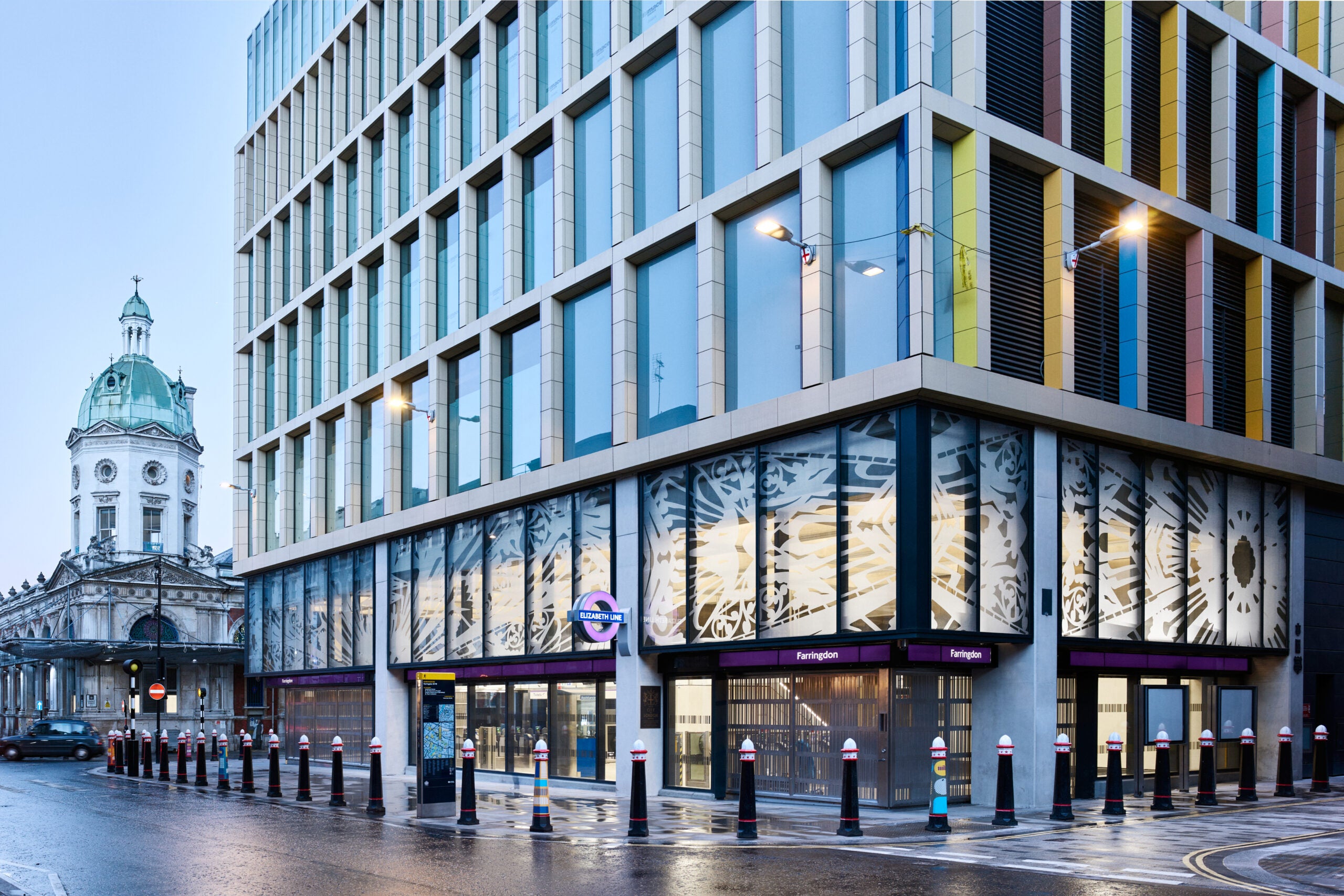
London’s new rapid rail service, the Elizabeth Line, opened last week with gusto. The project, formerly known as Crossrail, is the culmination of decades of planning; although it has faced its fair share of obstacles over the years.
The opening of the line was cause for excitement in the city and is a vital addition to the transport network when it comes to easing congestion and improving capacity.
There is a definite sense of uniformity to the new stations – especially at the core of the network, between Whitechapel and Paddington – with the same style of wide, lofty white tunnels found at each station.
However, those with a keen eye will notice that each station has its own unique accents, through the choice of lighting fixtures being used or, more noticeably, the art on display in and around the station.
Creating individual visual identities for Elizabeth Line Stations
As with the unique tiling and mosaics found at many stations on the London Underground network, Transport for London (TfL) commissioned the art at Elizabeth Line stations with a focus on connecting to the local areas.
“There was a desire within the commissioning process for the artwork to connect with the local area and the community,” says Eleanor Pinfield, head of Art on the Underground, TfL’s public art programme that oversees the commissioning and installation of art on the TfL network.
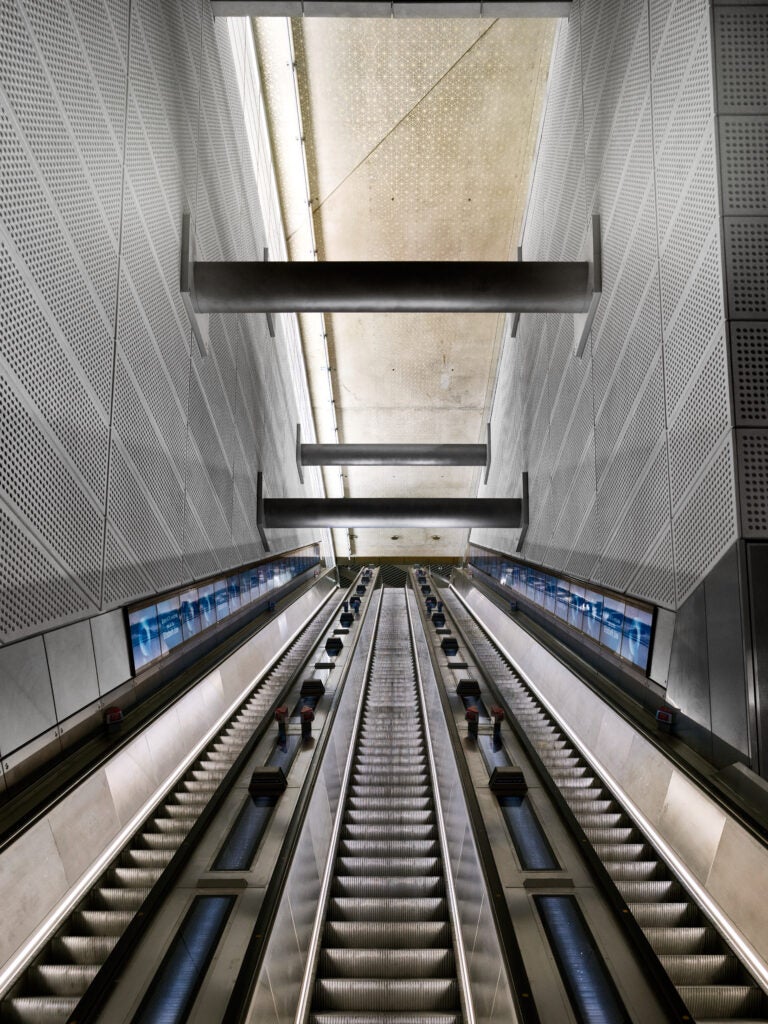

“But there are different ways of doing that. Richard Wright’s work at Tottenham Court Road is an abstract gold leaf pattern,” Pinfield continues. “You might say: ‘How does that connect to the area?’ Well, it’s really connecting with the architecture of the station, how it’s changing a perspective and adding a sort of lustre, an almost cathedral-like sense to that space.”
The example at Tottenham Court Road, ‘no title’ by Turner Prize winner Richard Wright, is admittedly quite abstract. It features an intricate, geometric gold-leaf pattern, hand-gilded by the artist and a team of assistants.
How well do you really know your competitors?
Access the most comprehensive Company Profiles on the market, powered by GlobalData. Save hours of research. Gain competitive edge.

Thank you!
Your download email will arrive shortly
Not ready to buy yet? Download a free sample
We are confident about the unique quality of our Company Profiles. However, we want you to make the most beneficial decision for your business, so we offer a free sample that you can download by submitting the below form
By GlobalData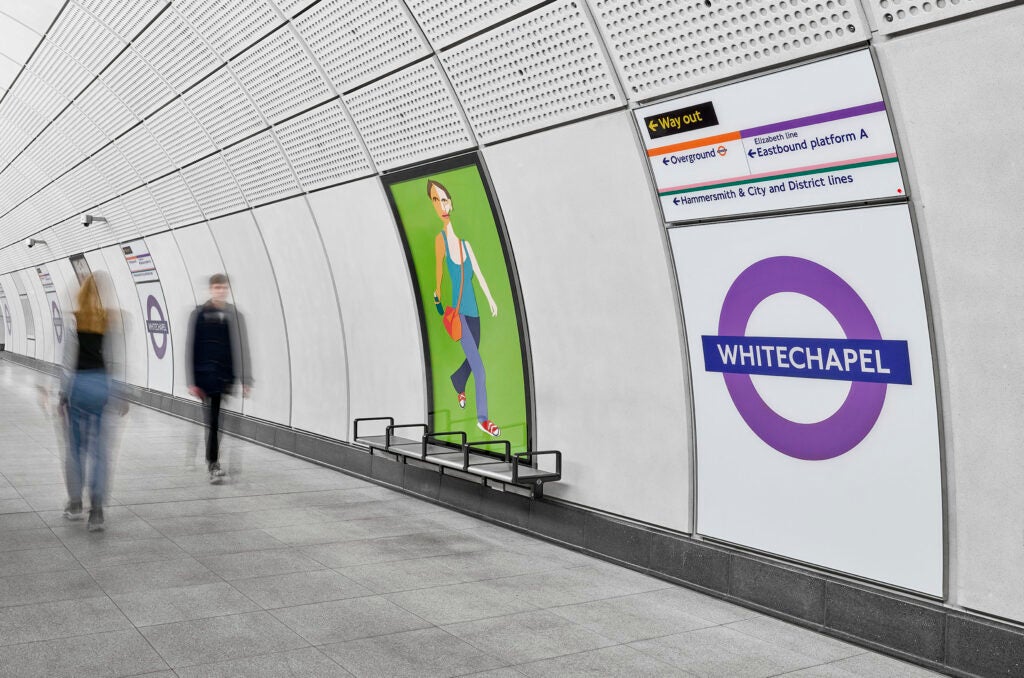
But at Whitechapel, it is clear to all that the art is directly connecting to and reflecting the local community. Artist Chantal Joffe spent time photographing members of the public around Whitechapel and transformed their likenesses into fabricated metal collages, which now line the platforms of the Elizabeth Line station.
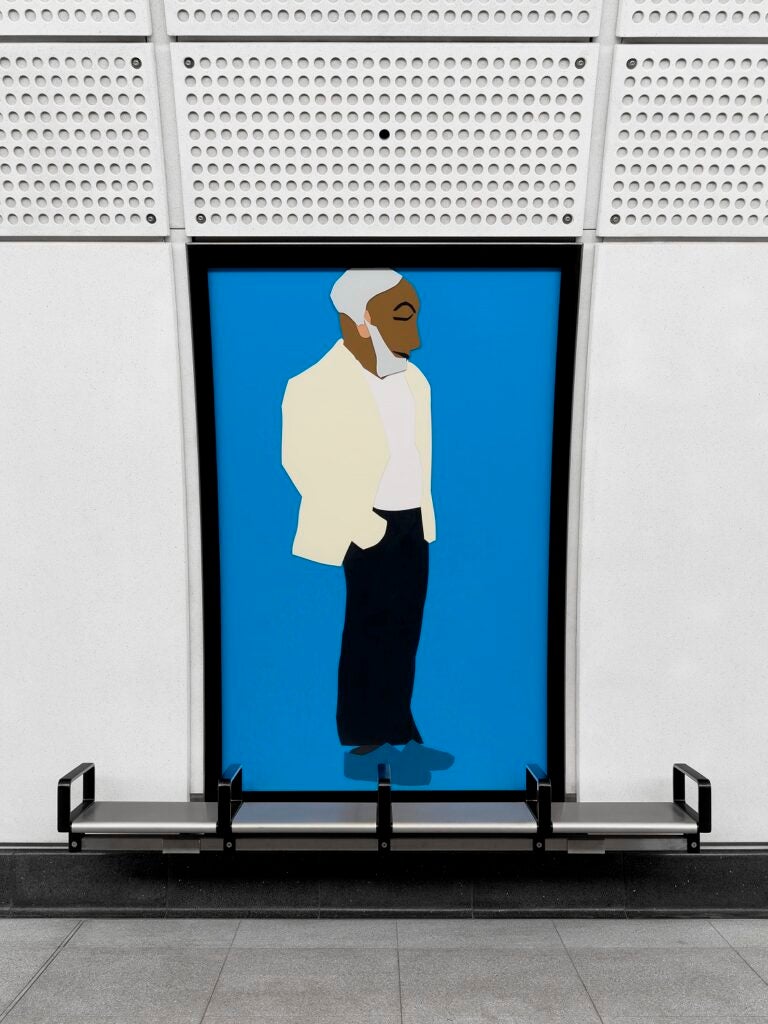
“Chantal Joffe was literally inspired on an afternoon in Whitechapel by the local people, reflecting them forevermore in the station,” explains Pinfield. “There’s this variety across the Elizabeth Line between directly referencing the local area, but also enhancing and developing the wider architecture and design of each station.”
Unique art commissioning on the Elizabeth line
The new stations in the core section of the Elizabeth line offered the opportunity for a unique commissioning process when it came to art at the stations, as the artists could work in tandem with architects.
“In all of the spaces, the artists were really carefully briefed. Obviously, the stations didn’t exist yet, but they were really heavily briefed by the architects about what the design ideas were,” says Pinfield.
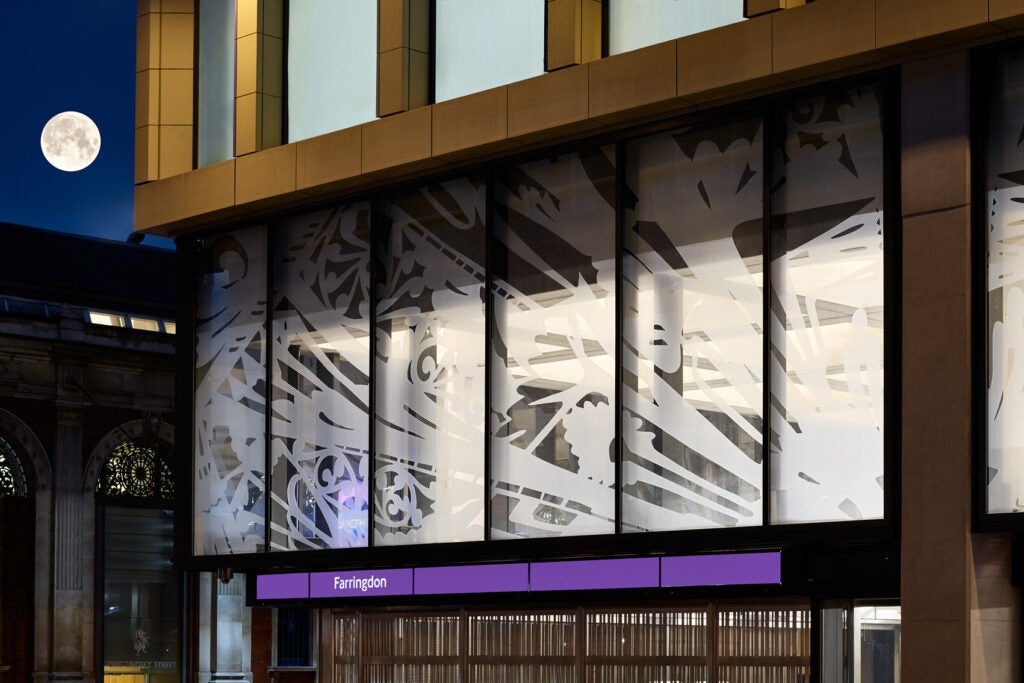
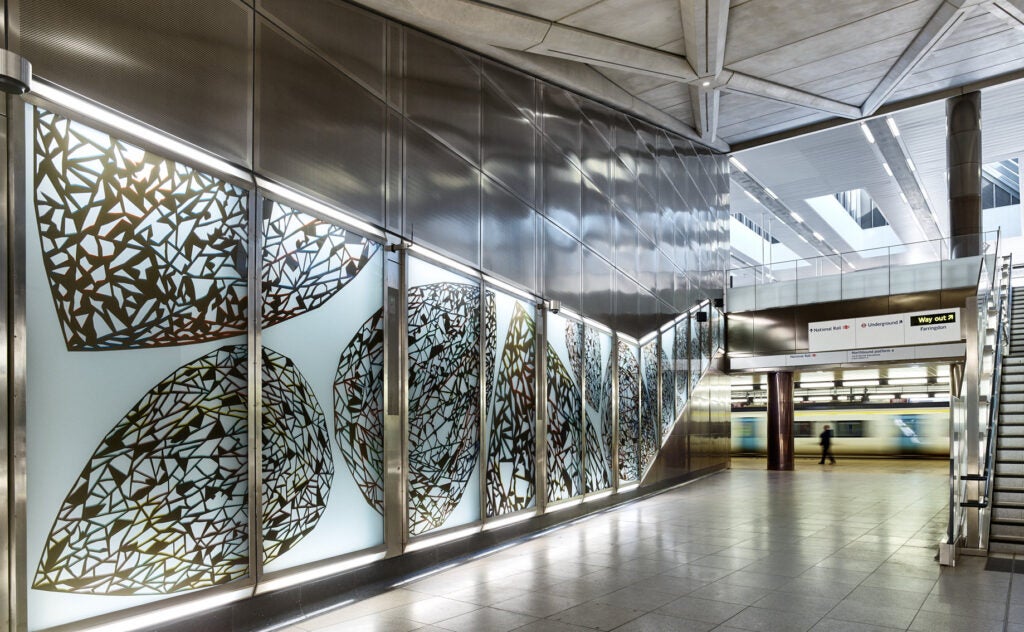
Looking at Farringdon station, Pinfield gives an example of the interaction between architecture and art by Simon Periton. The artist created two pieces for the station: ‘Avalanche’ and ‘Spectre’. Avalanche features a frieze of large diamonds, nodding to the goldsmiths, jewellers, and ironsmiths of nearby Hatton Garden.
Spectre features an elaborate curved pattern, printed on the exterior glazing that runs around three sides of the building at the Barbican entrance to the station, reflecting the Victorian metalwork of the nearby Smithfield Market
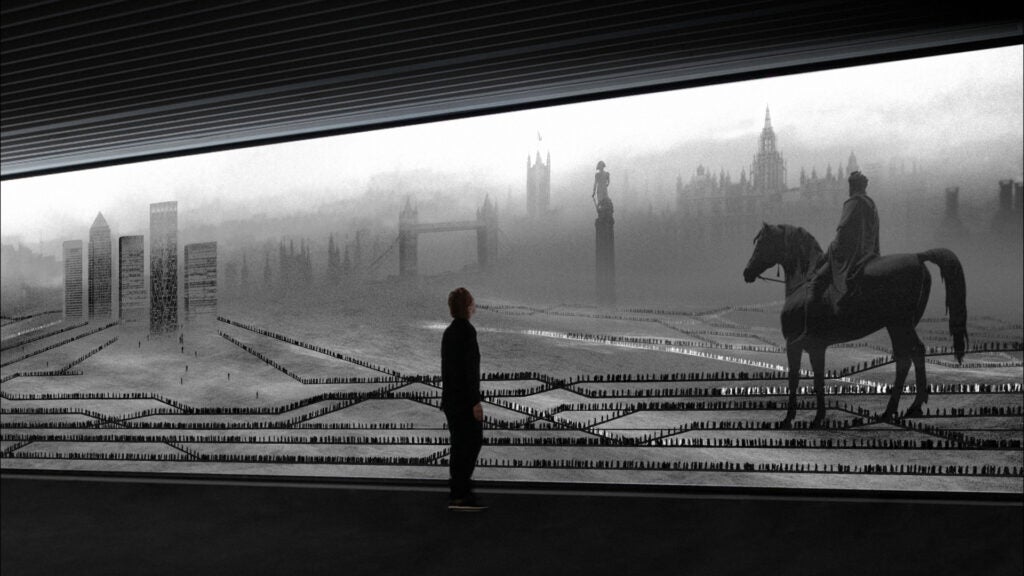
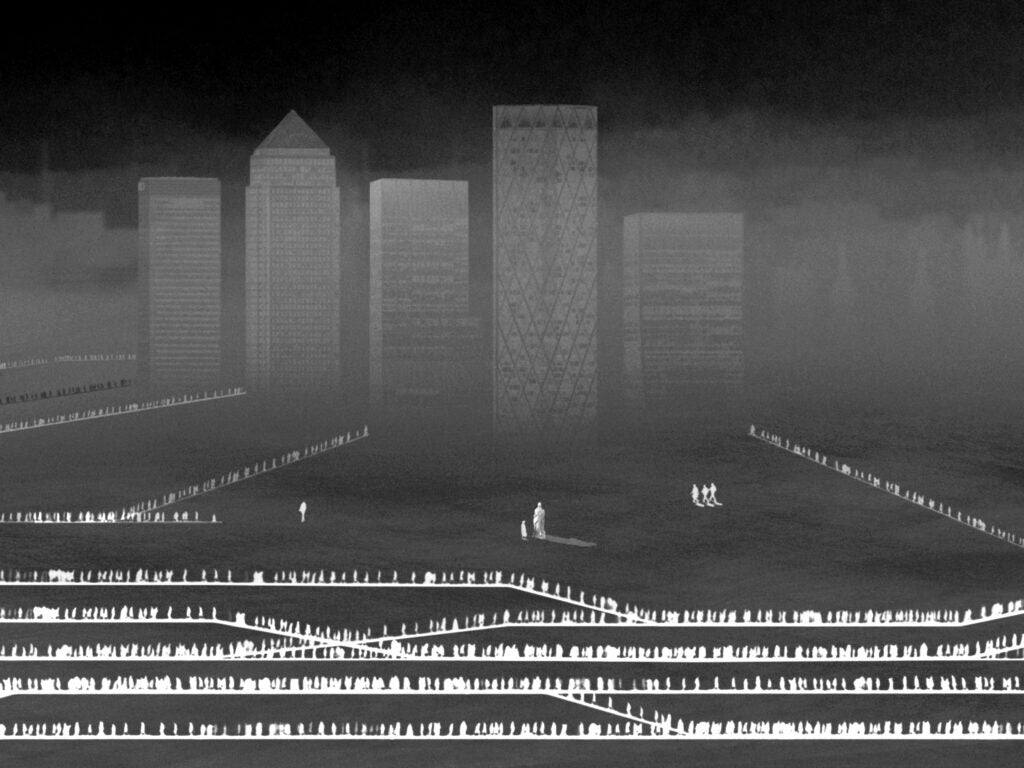
“There’s a really interesting interplay between the diamonds used in the art and the diamond structure here on the ceiling, which I think is one of those lovely synergies that come out of discussions between the artists and the architects,” notes Pinfield.
The importance of public art
Unsurprisingly, Pinfield enthuses passionately about the importance of art on the Elizabeth Line, and the TfL network more broadly.
“When you see something like the Elizabeth Line opening in London, we’re blown away by the quality of design, by the ambition, by the feel of the spaces. Art has such a big role to play in that, in terms of how people feel a connection, how they feel enriched as they’re walking through stations.
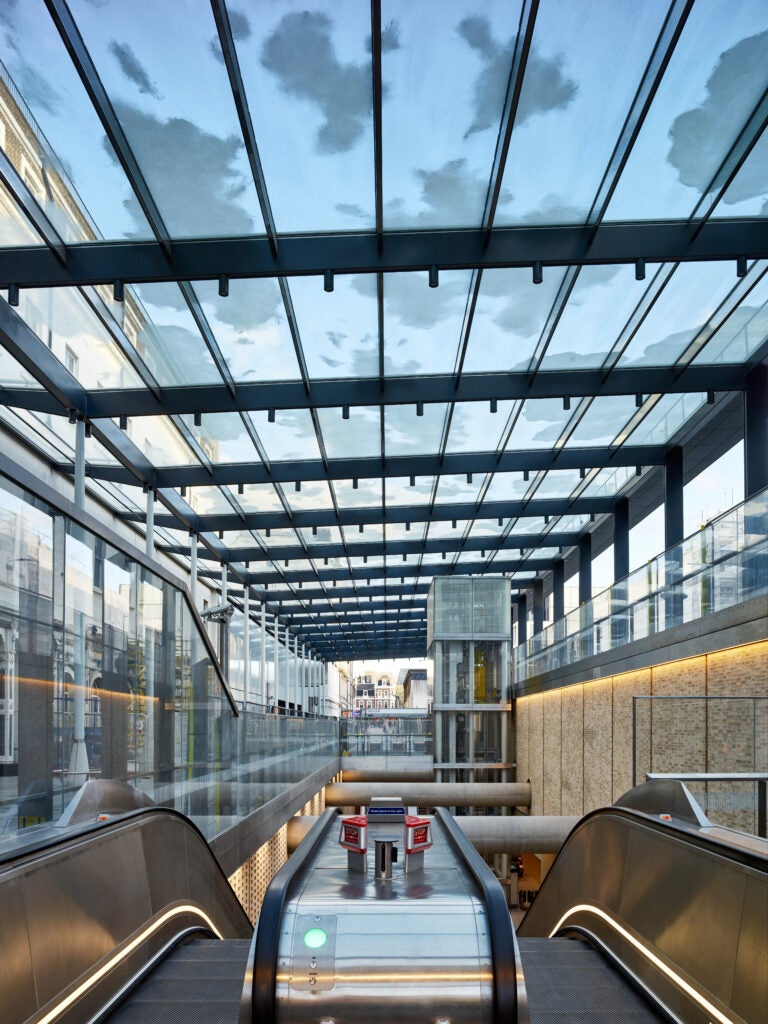
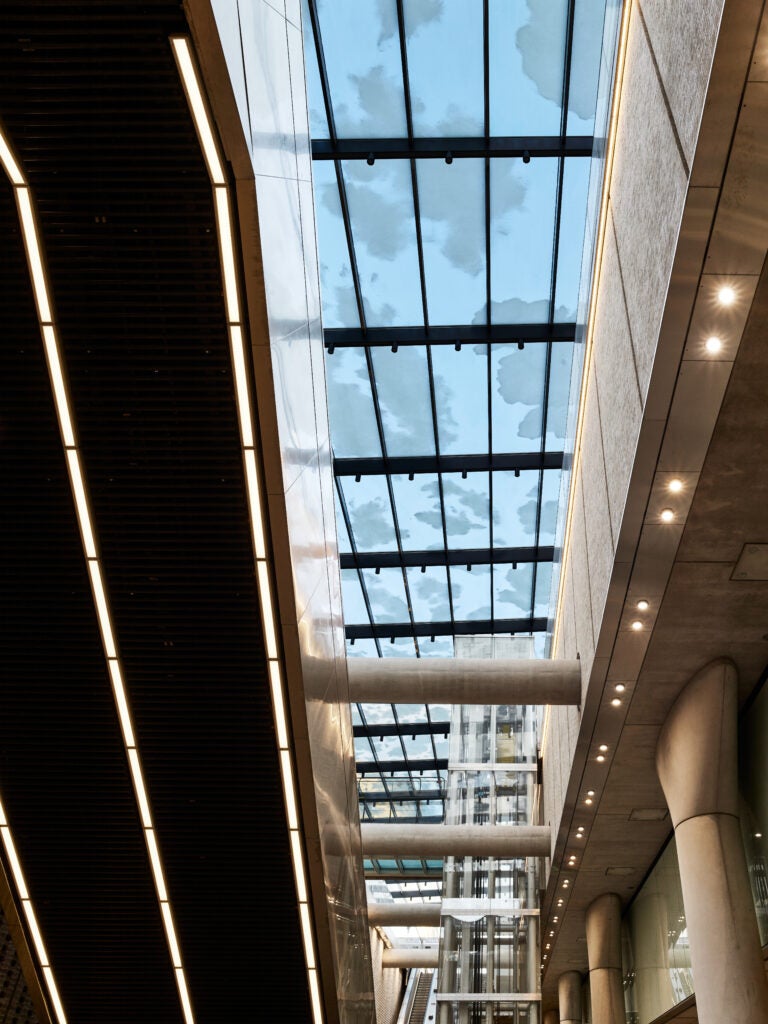
“This will be the biggest interaction many people will have with artwork in their entire life, you know. They might be coming to the station every day for years.
“I think it’s so important that we bring art into these spaces, allowing a repeated, enriching, exciting relationship with art, which I think really changes how people feel as they’re travelling about. That’s the value of public art.”
The Crossrail art programme was set up in partnership with host galleries and sponsors. The City of London Corporation gave the principle grant, which was matched against the corporate sponsors that came in.
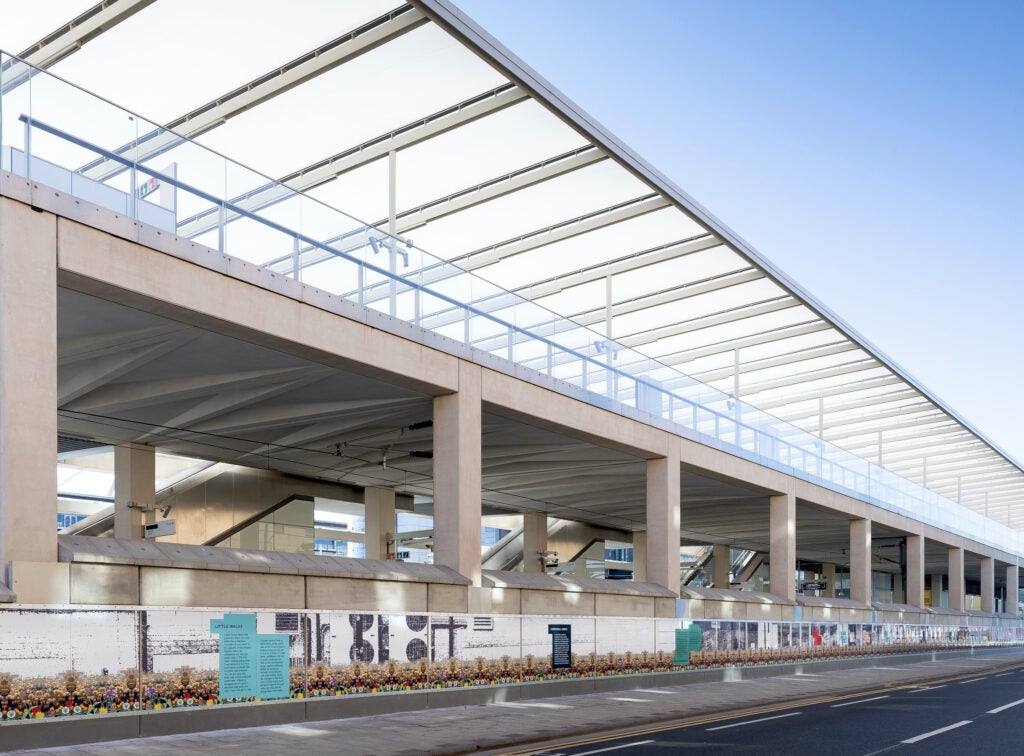
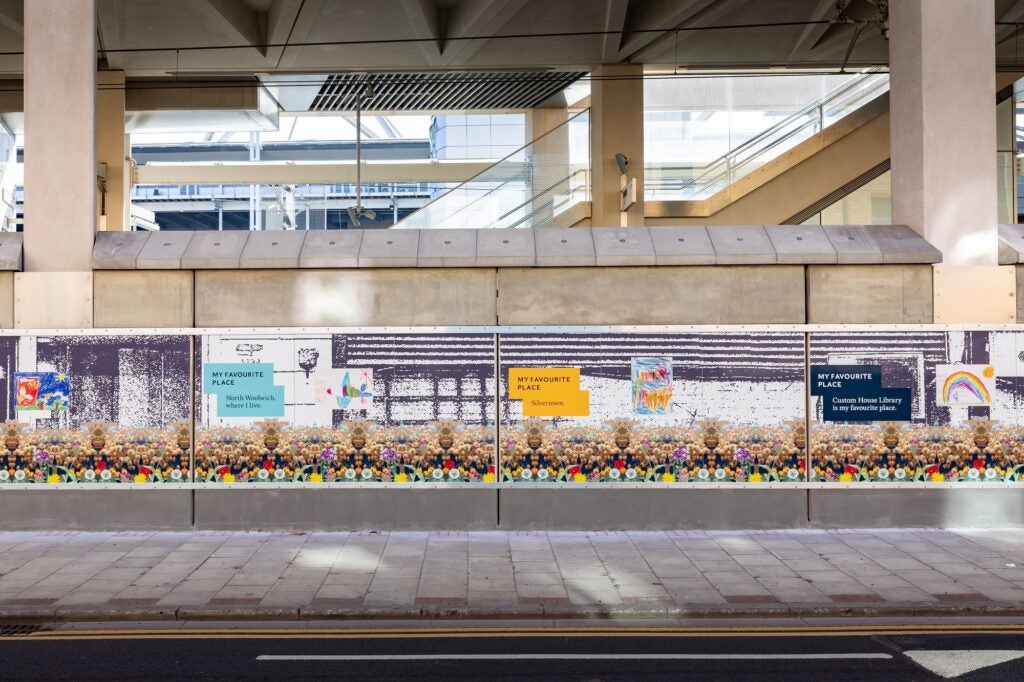
Pinfield points out that in her opinion, after the pandemic, travellers want a secure, safe, and uplifting environment, as opposed to “a plain white box”. Given the aesthetics of the stations on the Elizabeth Line central station, she raises a very good point: these stations could so easily feel sterile, but the art makes a huge difference.
“I’m really delighted that Crossrail chose to make art commissions in the central stations such a big part of this ambition,” she says. “I think we’re all much richer for it, it really creates visual focal points alongside this really impressive architecture.”







